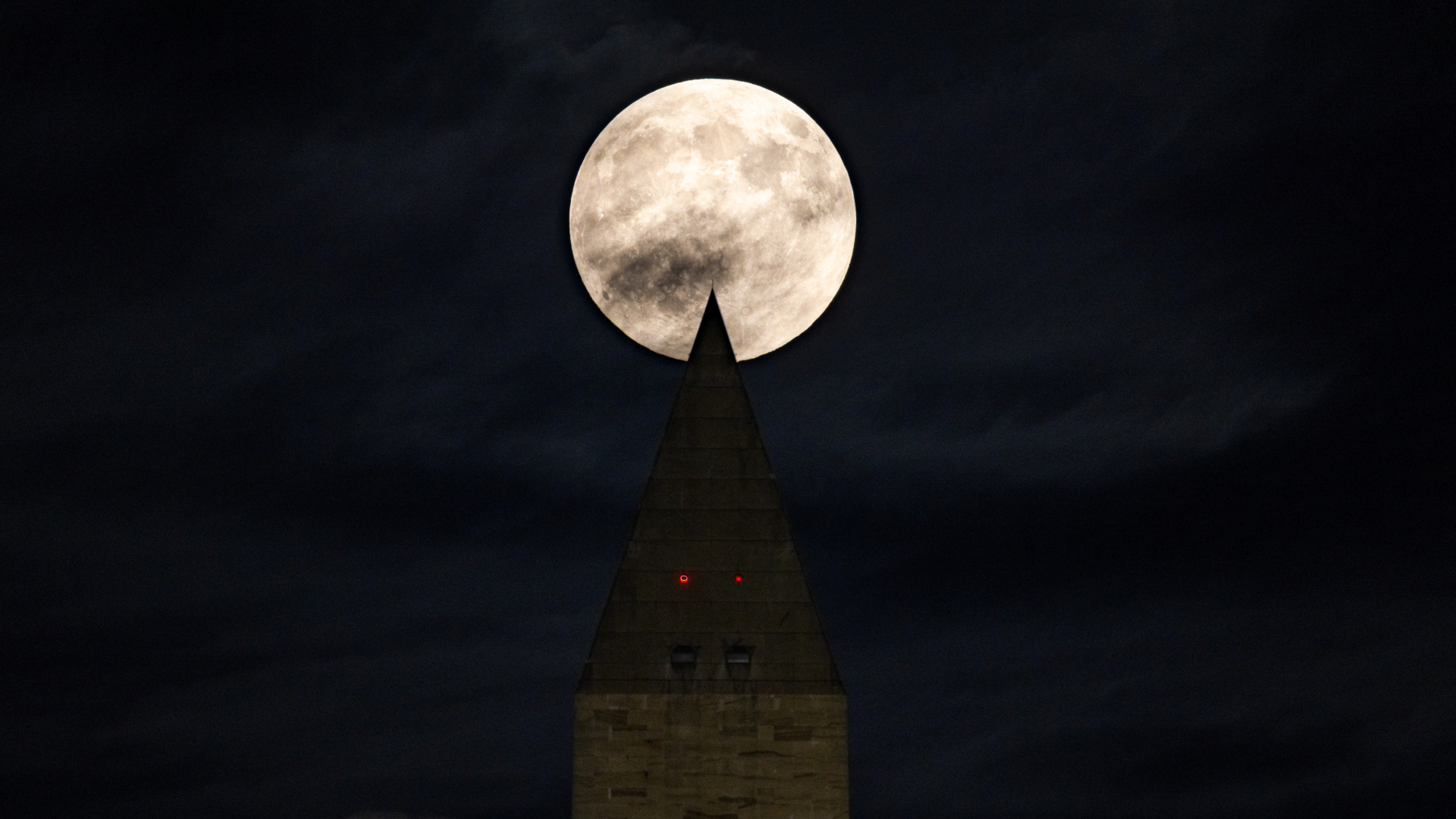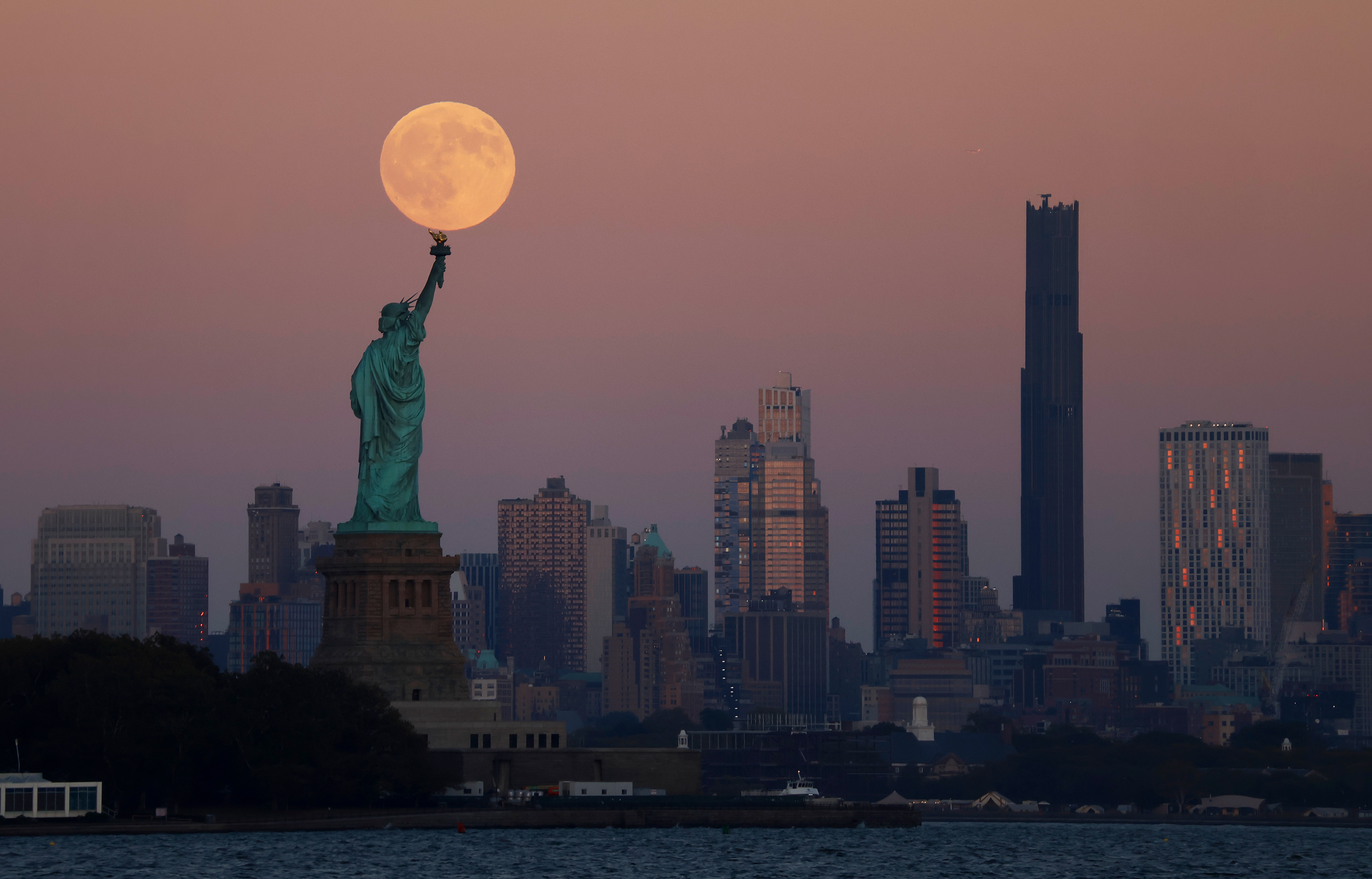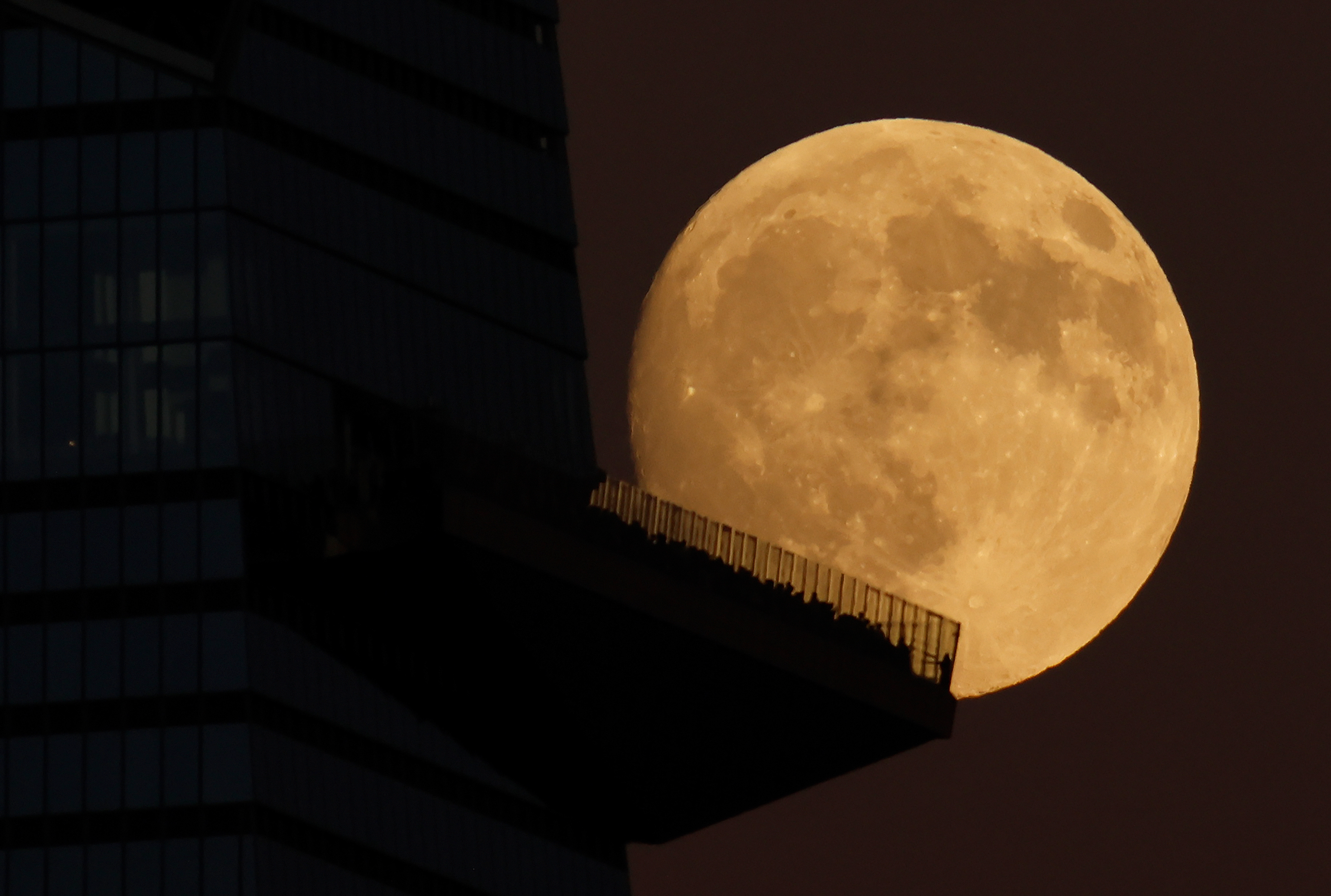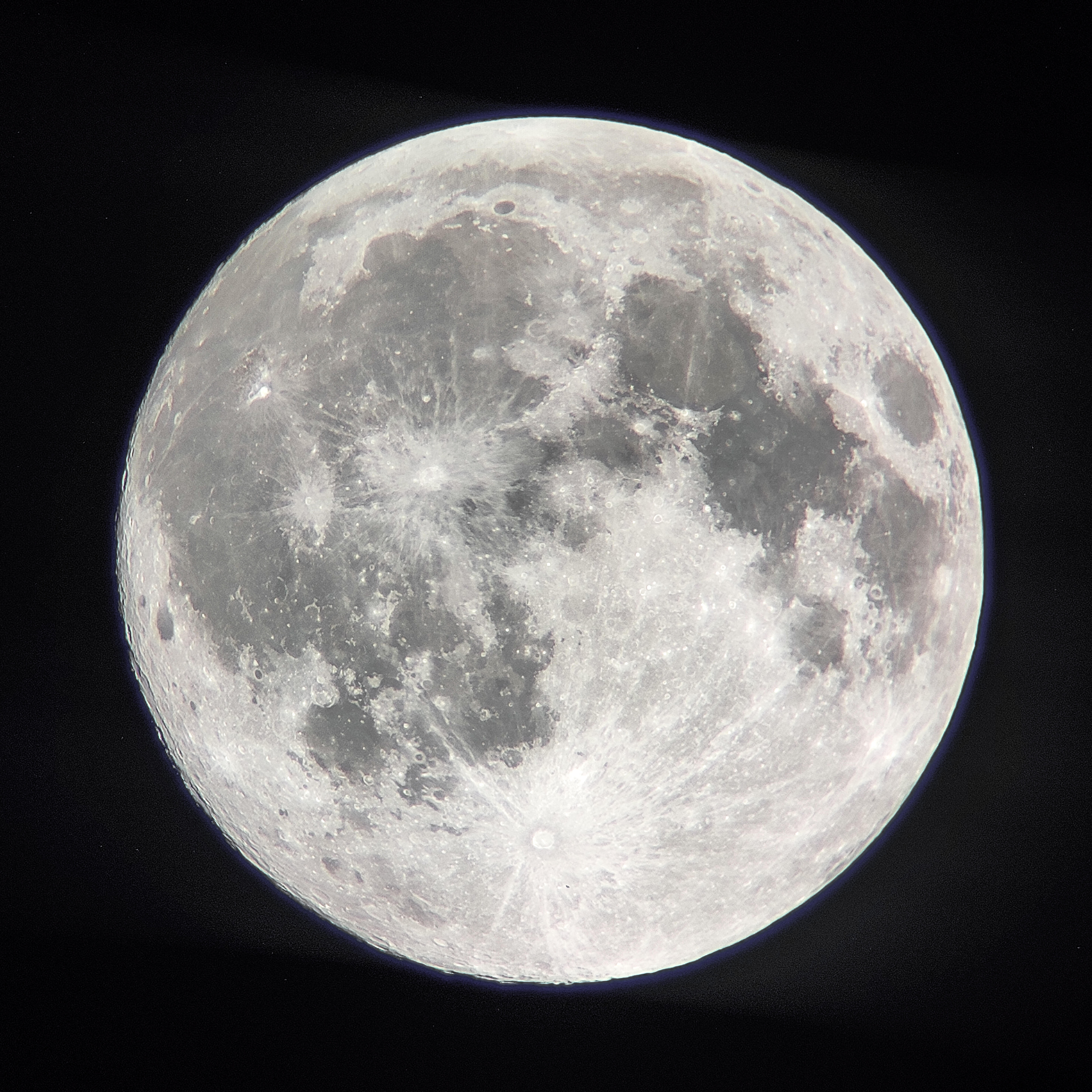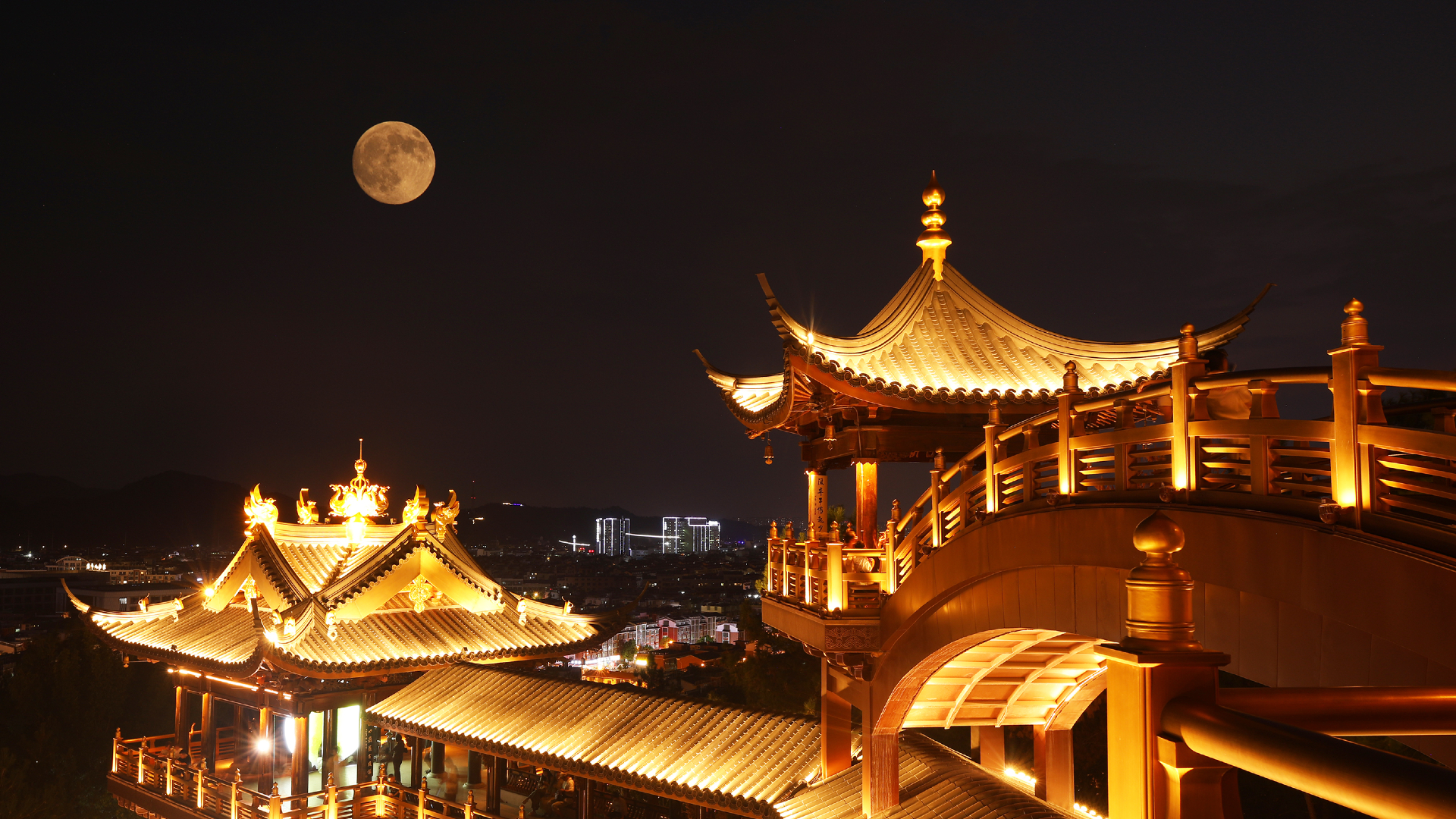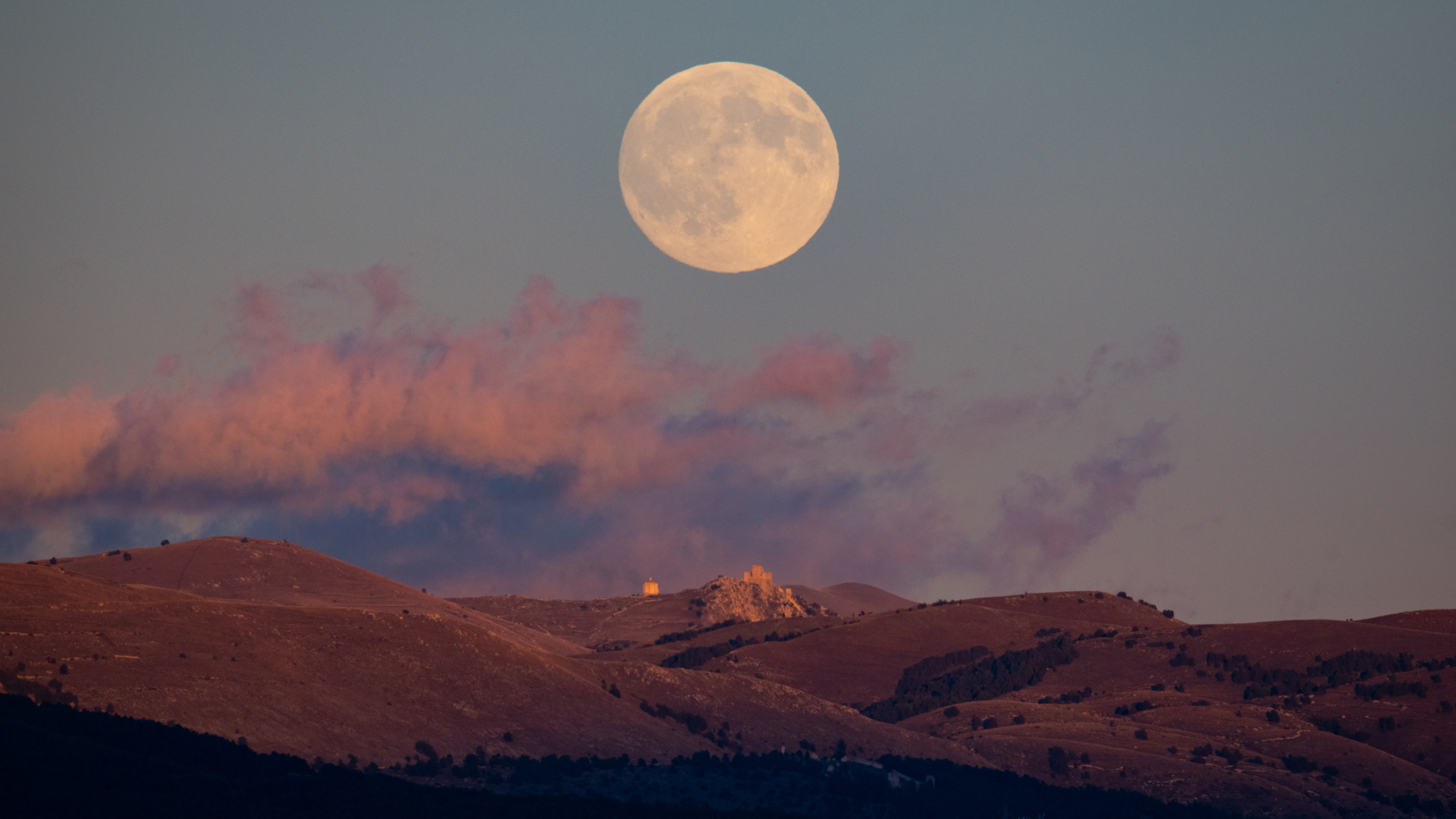October's full Harvest Moon: See breathtaking photos of 1st supermoon of 2025
See the best images of the October 2025 full Harvest Supermoon.
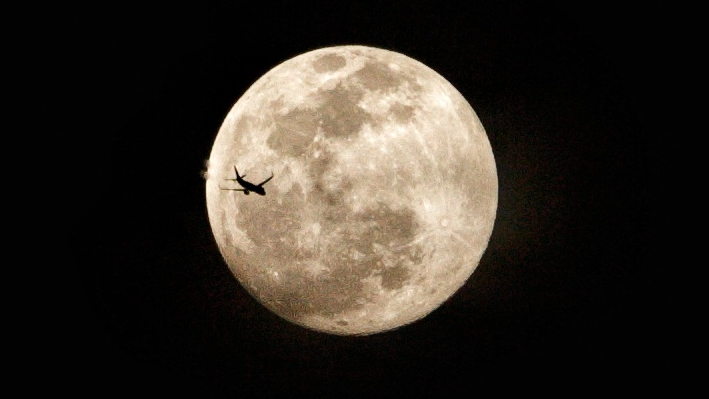
A majestic Harvest Supermoon graced the night sky on Oct. 6-7, putting on a spectacular show as it loomed large and bright over the eastern horizon at moonrise with Saturn close to its right among the stars of the constellation Pisces.
The closest full moon to the autumn equinox is known as the Harvest Moon — when, prior to the advent of artificial lighting, farmers would work under the reflected light of the full moon to bring in crops from the fields before the weather turned. The 2025 Harvest Moon happened to fall in October and occurred just as the moon was reaching its lowest point in its cyclical 27-day orbit of Earth, giving rise to a spectacular supermoon.
During a supermoon, the moon can appear up to 14% larger and 30% brighter than it does on average, making for a spectacular display as it rises over the eastern horizon opposite the setting sun in the west to flood the night sky with reflected sunlight.
Read on to see a collection of spectacular images of the full Harvest Supermoon, as seen through the lenses of the global astrophotography community. If you missed moonrise on Oct. 6 there's absolutely no need to fret, the moon will continue to look full to the casual observer in the day or two following its full moon phase, so get out there and try your hand at photography using our handy guide to imaging Earth's natural satellite!
Breathtaking images of the October 2025 full Harvest Supermoon
Austin DeSisto captured this perfectly timed shot of the full Harvest Moon as it passed behind the tip of the Washington Monument in Washington D.C. on October 6, as cloud wisps teamed up with solidified, ancient lava flows to darken the lunar surface.
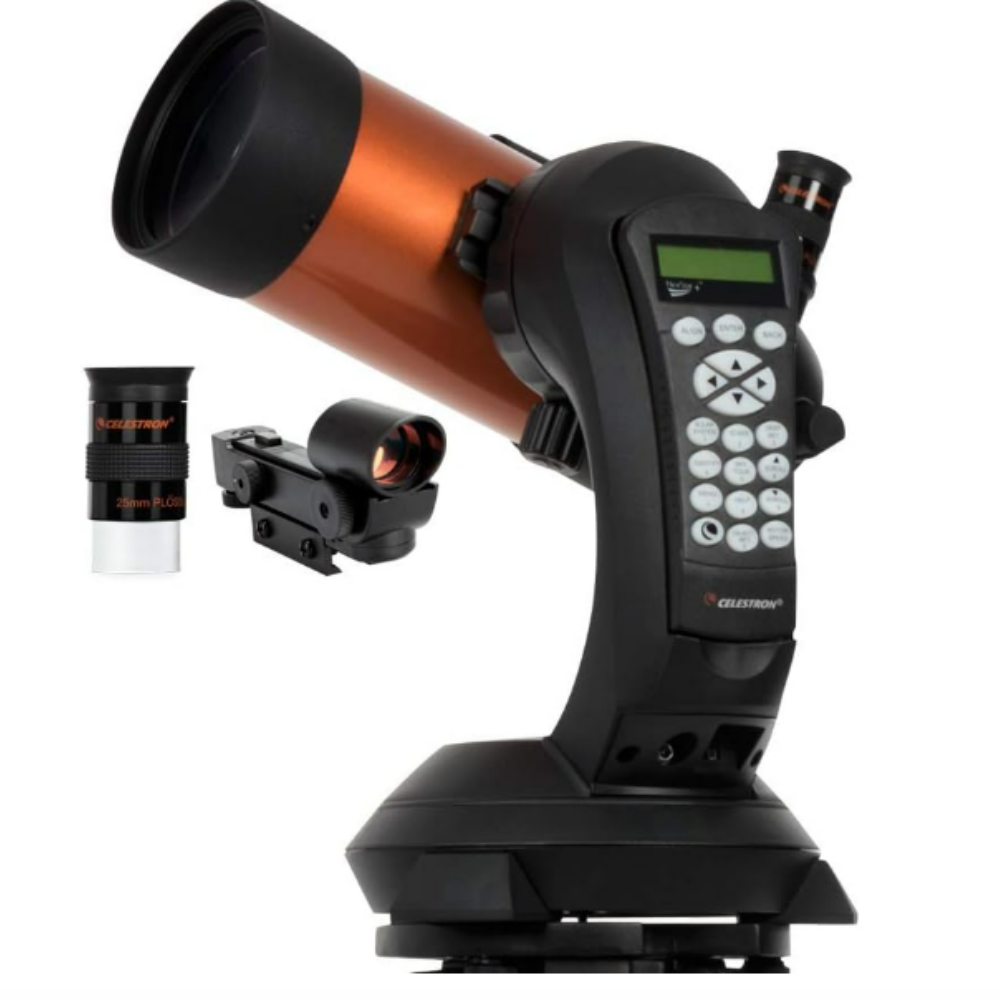
Looking for a telescope to view the moon? The Celestron NexStar 4SE is our top pick for beginners. For a more in-depth look at our Celestron NexStar 4SE review.
Veteran photographer Gary Hershorn snapped a stunning view of the yellow supermoon suspended above the Statue of Liberty in New York on Oct. 6, as seen at sunset from New Jersey City.
The moon's strange yellow hue is the result of a phenomenon known as Rayleigh Scattering, wherein Earth's dense atmosphere interferes with the passage of shorter, bluer wavelengths of light, while allowing longer, redder, wavelengths to pass through relatively unscathed. This can result in a striking yellow-orange moon when Earth's natural satellite is close to the horizon.
Breaking space news, the latest updates on rocket launches, skywatching events and more!
Hershorn also took the time to capture this image of the Harvest Supermoon peeking around the EdgeNYC observation deck in New York one night earlier on Oct. 5, while a tiny slither on the moon's left side remained unlit by direct sunlight.
Astrophotographer Amartya Mishra took a spectacularly detailed shot of the Harvest Moon shining in the skies above Kathmandu in Nepal at 9 p.m. local time on Oct. 6. "It’s the first supermoon of the year!" Mishra told Space.com in an email. "The moon appeared brighter and larger than usual, glowing serenely in the night sky."
The image reveals the dark forms of lunar maria, or lunar seas, sprawling across the lunar surface, marked by the bright streaks of impact ejecta thrown out from prominent impact craters including Copernicus, Kepler and Tycho to the south. Numerous mountain ranges are also on display, including the vast arc of Montes Apenninus above the lunar equator and Montes Jura further to the north.
This image of the full Harvest Supermoon was captured by photographer Gong Xianming during the Mid-Autumn Festival, or Moon Festival in the city of Jinhua, China. The festival's origins stretch back 3,000 years to the Zhou Dynasty, according to ChinaHighlights.com, and is today a time to re-unite with family and friends, while appreciating the moon and eating pastries known as mooncakes.
Lorenzo Di Cola caught the moon suspended above a cloudbank above the tranquil hills near the city of L'Aquila, Italy, with the distant forms of the Rocca Calascio Castle and Santa Maria della Pietà church visible on the horizon.
A well-timed view of a passenger jet crossing the face of the Harvest Moon taken by Aditya Irawan from the West Java province of Indonesia on October 6. At this point, the moon was roughly 361,000 kilometers from Earth, two days ahead of its closest monthly approach to our planet on Oct. 8, known as Perigee, according to In-the-sky.org.
X user loonarpix was also able to capture this colorful view of the full moon from Palayan City in the Philippines using a Nikon D3300 camera in conjunction with a F70060 refractor telescope.
251007 Harvest Moon at 99.8% fullness, first supermoon of 2025, visible before setting. pic.twitter.com/nyuIHy5U0LOctober 6, 2025
Finally, X user Rami Ammoun took a series of ethereal shots of the moon glowing with a silvery light on the night of Oct. 6, as the Harvest Moon drew closer to Earth ahead of perigee.
Full Harvest Super Moon tonight 🌕 🌾#supermoon pic.twitter.com/qiPgczMrTYOctober 7, 2025
The October lunar spectacle will be followed by three more supermoons in November, December and January 2026. If you want to take a shot at capturing an upcoming supermoon for yourself, then be sure to check out our roundups of the best cameras and lenses for astrophotography, as well as our expert's guide to photographing a supermoon.
Editor's Note: If you would like to share your astrophotography with Space.com's readers, then please send your photo(s), comments, and your name and location to spacephotos@space.com.
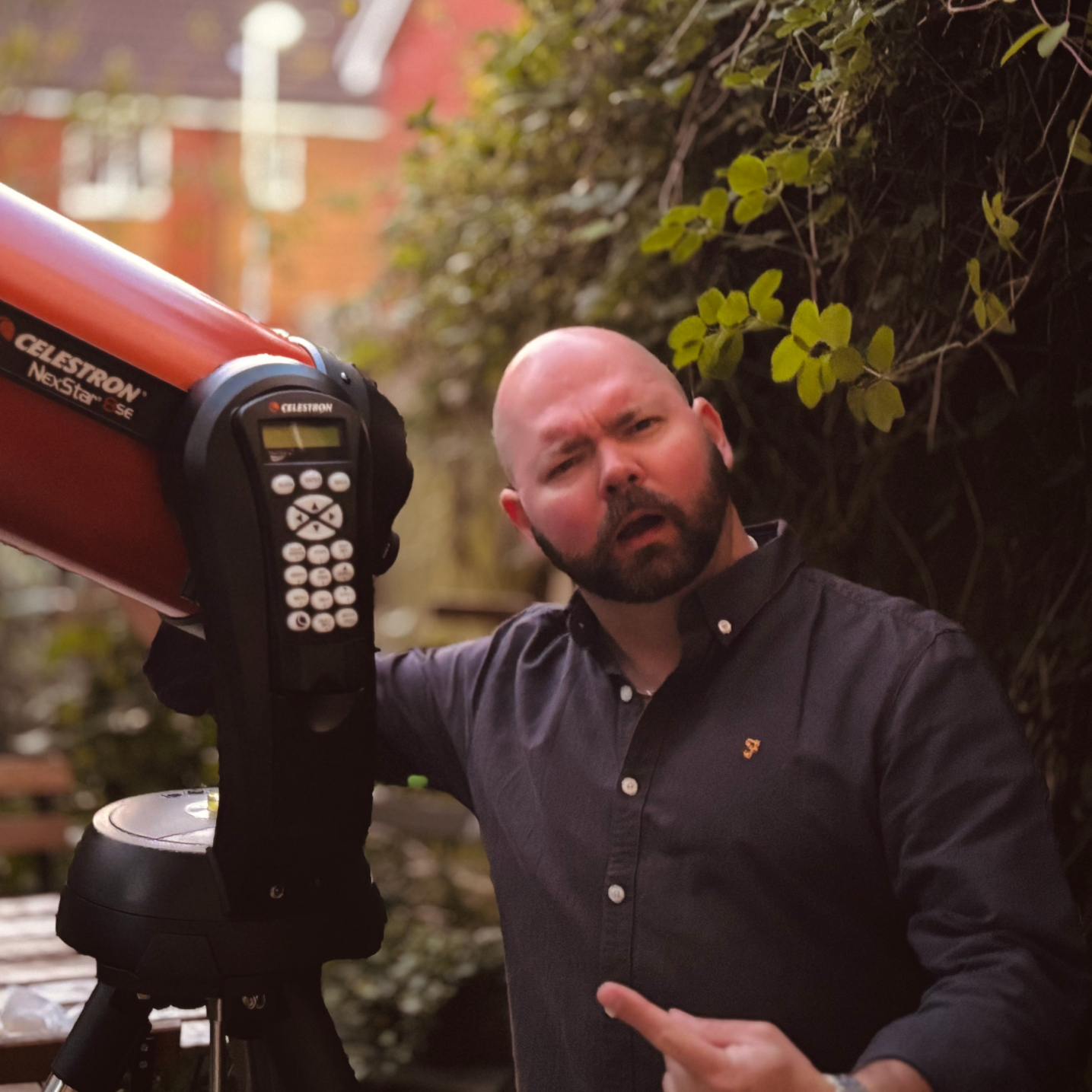
Anthony Wood joined Space.com in April 2025 after contributing articles to outlets including IGN, New Atlas and Gizmodo. He has a passion for the night sky, science, Hideo Kojima, and human space exploration, and can’t wait for the day when astronauts once again set foot on the moon.
You must confirm your public display name before commenting
Please logout and then login again, you will then be prompted to enter your display name.
